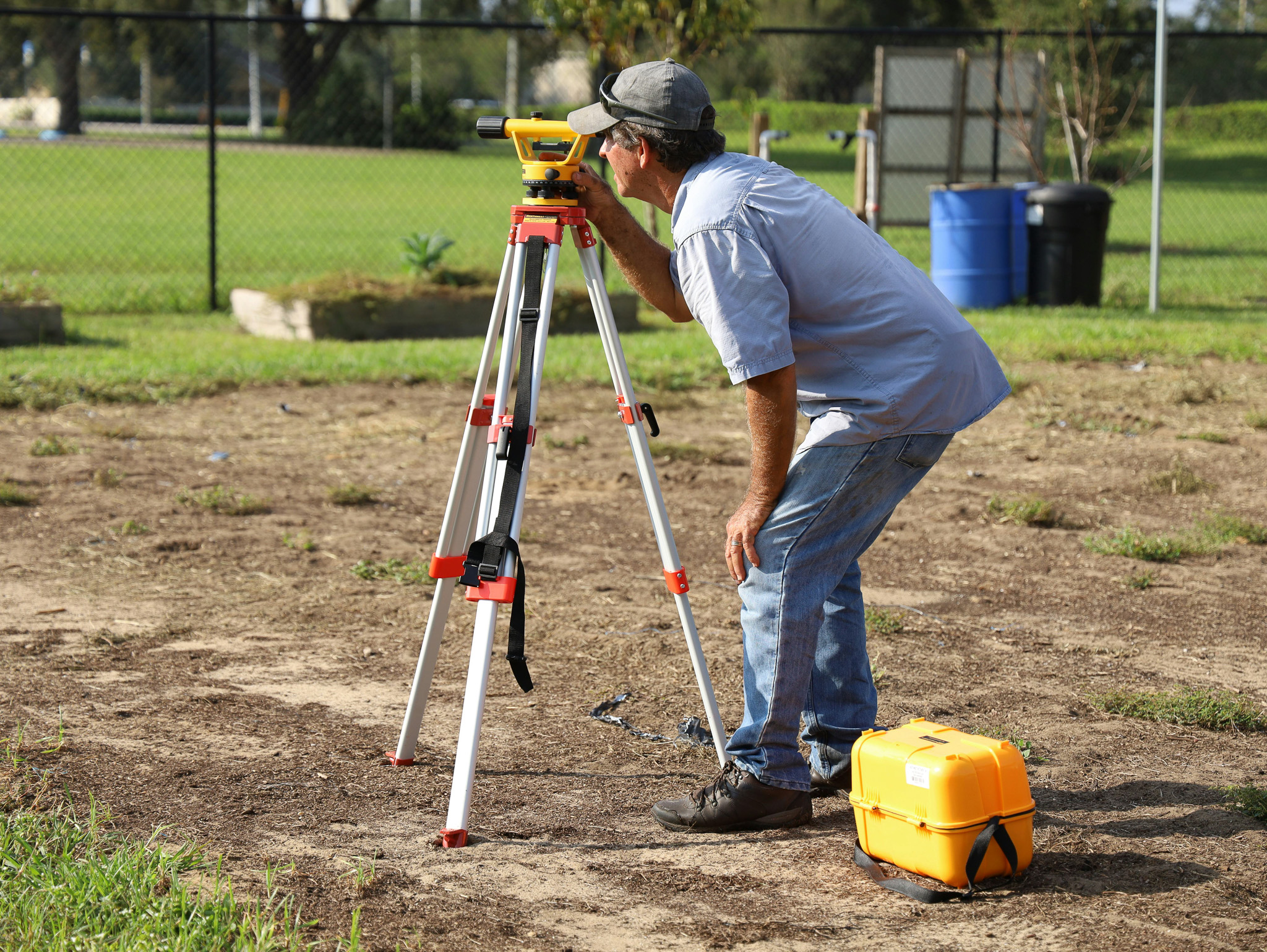Purchasing or selling a home can be one of the most significant transactions in a person’s life. Whether you’re a first-time home buyer or a seasoned real estate investor, ensuring that you fully understand your property and its boundaries is critical for a smooth and legally sound purchase or sale. One of the key elements in this process is the property survey.
A property survey, also known as a land survey or boundary survey, provides essential information regarding property boundaries, structures, easements, encroachments, and more. This document forms the legal basis of property ownership, so both buyers and sellers benefit from understanding the intricacies of property surveys. In this article, we’ll explore what a property survey is, why it’s necessary, how to read one, what types of surveys exist, and how they impact you as a buyer or seller. By the end, you’ll have a solid foundation on one of the most important yet often misunderstood aspects of real estate transactions
What Is a Property Survey?
A property survey is a precise measurement and mapping of a piece of land, detailing its boundaries and any structures or physical features on it. Conducted by a licensed surveyor, the survey ensures that the property’s official dimensions match the legal descriptions filed with your county or municipality. In other words, a property survey verifies where your property lines begin and end.
Key Components of a Property Survey
- Boundary Lines: The surveyor establishes the exact lines that demarcate your land. These boundaries ensure you know precisely how much land you own.
- Structures: A survey will detail the location of buildings, fences, driveways, or sheds that exist on the property.
- Easements: Easements are parts of a property’s land that others have the right to use. Common easements include utility lines, shared driveways, or access points.
- Right-of-Ways: A right-of-way is often used by local governments or utility companies to gain access to roads or infrastructure that run through your property.
- Encroachments: An encroachment occurs when part of a structure (such as a fence or shed) extends onto a neighboring property or a public right-of-way.
Why Is a Property Survey Important?
Regardless of whether you are buying or selling a home, there are several reasons a property survey is crucial.
- Legal Clarity: A property survey clarifies the exact boundaries of a piece of land. This can help prevent legal disputes such as boundary disagreements with neighbors.
- Zoning Compliance: Municipalities often have specific zoning laws that dictate where and how structures can be built. A property survey helps ensure compliance, which becomes essential when planning additions, renovations, or new structures.
- Mortgage and Title Requirements: Many lenders require a survey before approving a mortgage to confirm that the property meets underwriting standards. Moreover, title insurance companies often rely on the survey to verify that there are no hidden liens or encumbrances.
- Transparent Transactions: For a seller, having a current survey on hand shows prospective buyers exactly what they’re getting. This transparency can speed up the transaction and help avoid unwelcome surprises.
- Conflict Resolution: If there’s ever a boundary dispute, a recent survey is the clearest evidence of the true property lines.
Types of Property Surveys
Not all property surveys are the same. The type of survey you need depends on what the property will be used for and what the buyer (or lender) requires.
Boundary Survey: A boundary survey is the most common type of survey, typically required for residential real estate transactions. The surveyor will measure the property’s perimeter, locate and mark boundary lines, and note any features that define or affect those boundaries (e.g., roads, fences, or neighbor encroachments).
Mortgage or Loan Surve: Often required by lending institutions, a mortgage or loan survey ensures that the property meets the lender’s guidelines. It verifies boundary lines, identifies any structures, and ensures that there are no legal violations such as building setbacks or encroachments that could affect the property’s title.
ALTA/NSPS Survey: An ALTA (American Land Title Association)/NSPS (National Society of Professional Surveyors) Land Title Survey is more detailed and is typically requested for commercial properties. This survey meets the strictest standards and provides extensive information about boundaries, easements, improvements, encroachments, and other elements that could influence the title. Residential buyers typically don’t require an ALTA/NSPS survey unless the property has unique or commercial-like features.
Location Survey: A location survey is a simpler, less detailed version of a boundary survey. While it confirms the location of boundary lines and structures, it may not include in-depth documentation of easements, encroachments, or specific land features. Lenders and title companies typically do not accept location surveys if they require more detailed information.
Topographic Survey: A topographic survey measures and identifies the land’s physical features such as elevations, contours, trees, streams, and other natural elements. While this is less commonly used in a simple residential transaction, it’s crucial for construction and land development to determine grading or drainage requirements.
When Is a Property Survey Needed?
Buying a Home: In many states, a recent property survey is required by lenders to close on a mortgage. Even if it’s not mandatory, buyers often commission a survey to ensure there are no hidden issues. A survey can detect problems like a shed that sits partially on a neighbor’s property or incorrectly placed fences that might incite disputes later.
Selling a Home: Sellers who provide an up-to-date survey demonstrate transparency about the property. This can boost buyer confidence and speed up closing. If you’re planning on major changes or anticipating a buyer who wants financing, having a current survey on hand is often a smart move.
Renovating or Adding Structures: If you want to build a fence, add a garage, or construct an addition, it’s wise to verify your property boundaries. The last thing you want is to discover that your new fence encroaches upon your neighbor’s yard or that your planned garage violates setbacks mandated by local zoning laws.
Settling Disputes: When boundary or easement conflicts arise, the most reliable way to resolve them is through an accurate property survey. A licensed surveyor’s findings can carry significant legal weight should the dispute escalate.
How Property Surveys Are Conducted
Property surveys are not just about putting stakes in the ground. Licensed surveyors use a mix of historical research, sophisticated measuring instruments, and computational tools.
- Researching Public Records: The surveyor reviews historical surveys, property deeds, and title documents. This helps to reconcile older boundary descriptions with the modern layout.
- Field Work: The surveyor visits the property, physically measuring distances, recording angles, and noting landmarks. Today’s surveyors often use satellite-based tools like GPS as well as robotic total stations to collect highly accurate data.
- Data Analysis: Back at the office, the surveyor compiles the field data and reconciles it with the historical records. Specialized software is used to create a comprehensive drawing or map that reflects the property’s layout.
- Final Report and Map: Once complete, you receive a report or survey drawing that indicates your property boundaries, physical features, easements, and any issues of note.
Reading and Understanding a Survey
Legend and Notations: Survey drawings can look technical and dense. Start by reviewing the legend, which translates the symbols, lines, and abbreviations on the map. This might include markings for utility lines, structures, or elevation contours (for topographic surveys).
Boundary Lines and Dimensions: These are typically represented by heavy lines or highlighted edges on the survey’s map. The distances between boundary points will be labeled. This is usually the most crucial aspect for a home buyer to check.
Easements and Rights-of-Way: Look for areas on the survey marked or shaded as “Easements,” indicating where a third party (like a utility company) holds certain rights. Confirm whether these easements affect how you plan to use the property.
Encroachments: Your survey will label any encroachments, including structures that cross onto your land from a neighbor’s property, or vice versa. Encroachments can complicate future property transactions or improvements.
Structures and Setbacks: The survey should depict all buildings, fences, driveways, and patios. It may also indicate zoning setbacks—areas where buildings can’t extend beyond. Ensuring compliance with these setbacks is vital if you plan on adding onto your home.
Potential Pitfalls and How to Avoid Them
- Relying on an Old Survey: Some property owners try to use an old survey to save costs, but land features can change over time. Boundary lines may not change, but improvements like fences, decks, and sheds can shift or be rebuilt, leading to inaccuracies.
- Skipping the Survey Altogether: While it might be tempting to save a few hundred or thousand dollars, not getting a survey can expose you to significant risks, including legal disputes, zoning violations, or forced property alterations.
- Ignoring Encroachments: Any minor encroachment—like a neighbor’s fence—should be addressed immediately. Failing to deal with small issues can lead to bigger legal disputes down the road.
- Not Verifying Surveyor Credentials: Always hire a licensed surveyor in your state. A non-licensed survey may not hold up in court or for official uses.
Costs and How to Find a Licensed Surveyor
Typical Costs: The cost of a property survey can range widely depending on factors like:
Property Size: Larger properties require more work and thus cost more.
Property Shape and Terrain: An irregularly shaped lot or a property with thick vegetation or challenging topography can increase survey difficulty and cost.
Survey Complexity: A simple boundary survey might cost a few hundred dollars, whereas an ALTA/NSPS or topographic survey can be significantly higher, often in the thousands.
Finding a Licensed Surveyor
Referrals and Recommendations: Your real estate agent, mortgage lender, or title company can often provide trusted referrals.
Professional Organizations: Check your state’s Board of Professional Surveyors or organizations like the National Society of Professional Surveyors for reputable contacts.
Online Searches: Look for local land surveyors with positive reviews. Always verify that they hold a valid license in your state
The Role of a Title Company
While not directly responsible for conducting surveys, title companies use the survey’s findings to insure a property’s title. They check for encumbrances like liens, easements, or boundary disputes that could affect the clean transfer of property ownership. If the survey reveals serious issues, the title company might require them to be addressed before issuing a title policy.
Special Considerations for Buyers and Sellers
For Buyers
- Request the Most Recent Survey: If the seller already has a recent, accurate survey, this can save you time and money.
- Budget for a New Survey If Needed: Even if a survey exists, you may wish to commission a new one for peace of mind, especially if the seller’s survey is outdated.
- Review Survey with Your Realtor or Attorney: Ensure that any discrepancies or red flags in the survey are addressed before closing.
For Sellers
- Disclose Known Issues: If you’re aware of any easements, encroachments, or boundary disputes, disclose them to potential buyers to avoid legal ramifications later.
- Update the Survey After Major Changes: If you’ve made significant additions, demolitions, or changes to the property, updating your survey will provide buyers with confidence and potentially speed up the transaction.
- Use the Survey as a Selling Point: A current, clean survey can be a value-add. It signals that you have nothing to hide and can encourage a smoother closing process.
Steps to Take If You Encounter Survey-Related Issues
- Consult Professionals: Speak with your real estate agent, attorney, or surveyor to understand the extent of any problem—whether it’s a boundary dispute or an unexpected easement.
- Negotiate: If you’re the buyer, you can negotiate with the seller to resolve the issue. This might involve requesting repairs, re-drawing lot lines (when feasible), or receiving compensation for the inconvenience.
- Consider Title Insurance: Title insurance can protect you from unforeseen claims related to boundary or title defects, but it’s crucial to fully disclose the survey findings to your title insurer.
- Legal Resolution: If the dispute cannot be resolved amicably, you might need to go through mediation or legal channels. This is why having a licensed, current survey is so important—it’s often the deciding piece of evidence in court
Conclusion
A property survey is more than just a technical drawing—it’s a legal safeguard that verifies exactly what you’re buying or selling, and under what conditions. It can reveal vital information about boundary lines, easements, encroachments, and zoning requirements that impact the value and usability of the land. As a home buyer, investing in a reliable survey can save you from unforeseen headaches. As a home seller, providing a recent, accurate survey can instill confidence in your buyers and smooth the transaction process.
Ultimately, knowledge is power when it comes to property transactions. With an accurate, up-to-date survey in hand, you’ll be equipped to make informed decisions, negotiate effectively, and protect your interests in one of life’s most significant investments. Whether you’re buying a starter home or selling a long-held family property, understanding and using property surveys properly can mean the difference between an stress-free experience and unexpected (and expensive) surprises.
Feel free to contact us HERE or for a faster response call or text 281-352-9972





